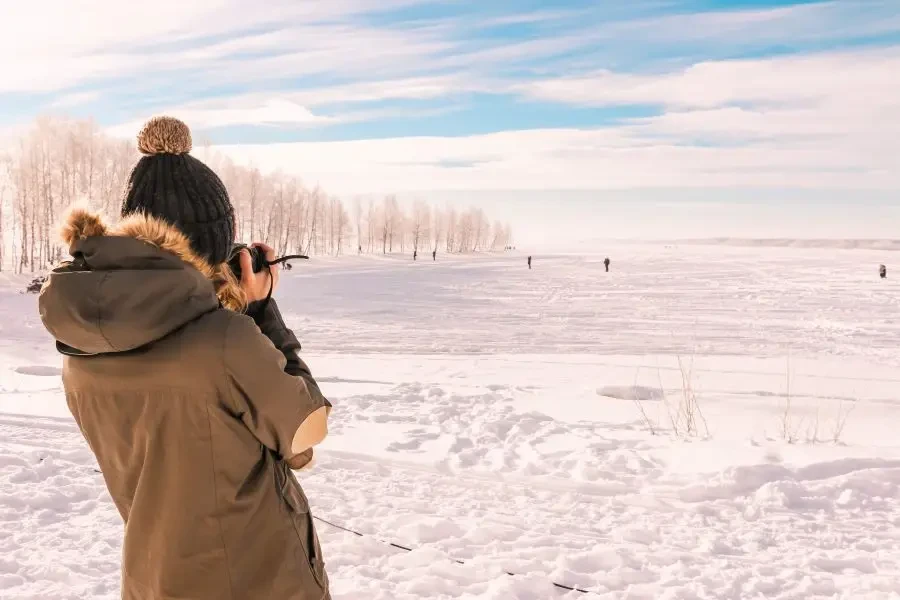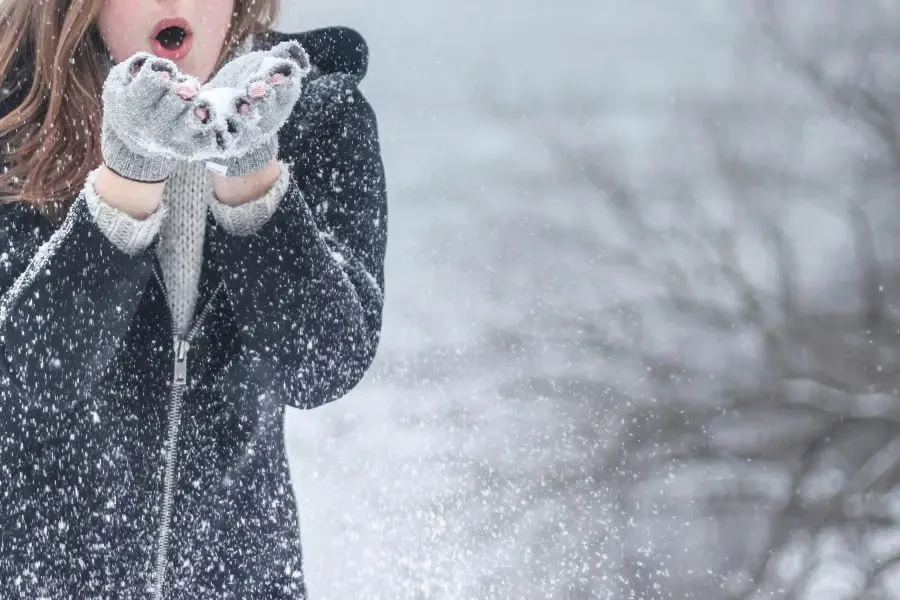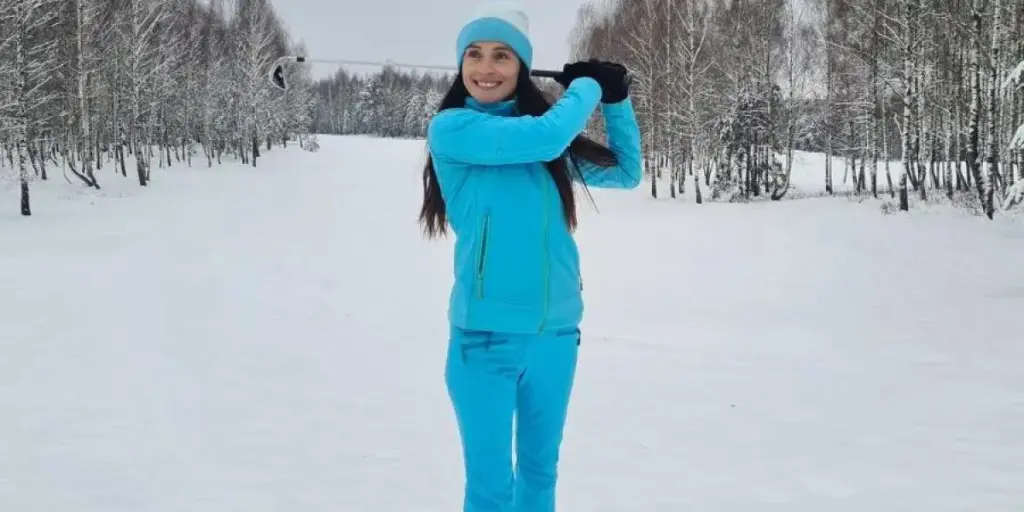Women’s snow jackets have evolved significantly over the years, blending functionality with fashion to meet the demands of modern consumers. As outdoor activities gain popularity, the market for women’s snow jackets continues to expand, driven by advancements in materials, design, and sustainability.
Table of Contents:
Market Overview of Women’s Snow Jackets
Innovative Materials and Textures in Women’s Snow Jackets
Design Trends Shaping Women’s Snow Jackets
Weather Resistance and Durability
Market Overview of Women’s Snow Jackets

The market for women’s snow jackets is experiencing robust growth, fueled by a combination of technological advancements, increasing participation in outdoor activities, and a rising demand for stylish yet functional outerwear. According to Statista, the global market for coats and jackets is projected to generate a revenue of USD 50.69 billion in 2024, with an annual growth rate of 2.45% from 2024 to 2028. This growth is indicative of the broader trend towards outdoor apparel, including snow jackets.
In the United States, the coats and jackets market generated a revenue of USD 7.08 billion in 2024, with a projected annual growth rate of 0.63% from 2024 to 2028. This market is characterized by a growing preference for sustainable and eco-friendly materials, reflecting a broader shift in consumer behavior towards environmentally conscious products.
The snow sports apparel market, which includes women’s snow jackets, is also on an upward trajectory. According to a report by Research and Markets, the global snow sports apparel market size is expected to reach USD 4.31 billion by 2030, growing at a CAGR of 7.3% from 2024 to 2030. This growth is driven by the increasing popularity of winter sports among millennials and the rising number of women participants in snow sports events.
Regional insights reveal that the demand for women’s snow jackets varies significantly across different markets. In North America and Europe, the market is driven by the popularity of winter sports and the need for high-quality, durable outerwear. In contrast, the Asia-Pacific region is witnessing significant growth due to the rising middle-class population and increasing interest in outdoor activities.
Key players in the market, such as Columbia Sportswear Company, VF Corporation, and adidas Group, are focusing on innovation and sustainability to capture a larger market share. These companies are investing in new technologies and materials to enhance the performance and eco-friendliness of their products.
Innovative Materials and Textures in Women’s Snow Jackets

High-Performance Fabrics for Ultimate Comfort
In the realm of women’s snow jackets, high-performance fabrics are pivotal for ensuring both comfort and functionality. According to the “Best Ski Jackets of 2024” report, many top-tier jackets incorporate advanced materials like 200D x 320D nylon, which is known for its durability and resistance to wear and tear. This fabric is particularly beneficial in harsh conditions, providing a robust barrier against the elements while maintaining a comfortable fit. Additionally, the use of YKK AquaGuard zippers enhances the jacket’s waterproof capabilities, ensuring that moisture stays out even in the wettest conditions.
The integration of synthetic fills, such as the 60-gram and 80-gram options mentioned in the report, offers a balanced level of warmth without adding excessive bulk. These materials are designed to trap heat effectively, making them ideal for cold weather activities. The smooth linings and relaxed fits of these jackets further contribute to their comfort, allowing for ease of movement and a pleasant wearing experience.
Sustainable and Eco-Friendly Materials
Sustainability is becoming an increasingly important factor in the design of women’s snow jackets. For instance, Patagonia’s Powder Town jacket features a postconsumer recycled polyester shell and 100% recycled insulation. This commitment to using eco-friendly materials not only reduces the environmental impact of production but also appeals to consumers who are conscious of their ecological footprint.
Moreover, the use of PFC-free DWR (Durable Water Repellent) coatings is another significant advancement. These coatings provide effective water resistance without the harmful environmental effects associated with traditional PFC-based treatments. By incorporating these sustainable materials, manufacturers are able to produce high-performance jackets that align with modern environmental standards.
The Role of Insulation in Snow Jackets
Insulation plays a crucial role in the functionality of snow jackets, particularly in maintaining warmth in cold conditions. The “Best Ski Jackets of 2024” report emphasizes the importance of synthetic insulation, which offers several advantages over natural down. Synthetic materials, such as those used in the Patagonia Insulated Powder Town jacket, provide excellent warmth retention even when wet, making them ideal for snowy and damp environments.
The report also notes the use of hybrid designs, which combine different types of insulation to optimize performance. For example, the Black Diamond Dawn Patrol Hybrid jacket incorporates a mix of materials to balance warmth and breathability. This approach ensures that the wearer remains comfortable during both high-exertion activities and periods of rest.
Design Trends Shaping Women’s Snow Jackets

Sleek and Stylish: Modern Aesthetics
Modern aesthetics are a key trend in the design of women’s snow jackets. Brands like Trew Gear offer jackets in multi-color layouts and classy solid colorways, catering to a wide range of style preferences. These designs are not only visually appealing but also practical, with features like long cuts for maximum coverage and smooth linings for added comfort.
Functional Features: Pockets, Hoods, and More
Functionality is a critical aspect of snow jacket design. Jackets with multiple pockets, such as the Trew Gear Tatoosh and Trillium, provide ample storage for essentials like goggles, gloves, and snacks. Adjustable hoods and removable powder skirts are also common features, enhancing the jacket’s versatility and adaptability to different weather conditions.
The inclusion of pit zips for ventilation and soft-touch taffeta linings for comfort further exemplifies the thoughtful design elements that enhance the overall user experience. These features ensure that the jackets are not only stylish but also highly functional, meeting the needs of both casual and serious skiers.
Customization Options for a Personalized Fit
Customization options are becoming increasingly popular in the design of women’s snow jackets. For instance, the Patagonia Insulated Powder Town jacket includes an adjustable hood and powder skirt, enabling the wearer to tailor the jacket to their specific needs.
Additionally, the availability of different sizes and fits, such as relaxed or trim cuts, ensures that there is a jacket to suit every body type and preference. This focus on customization not only enhances comfort but also allows for greater freedom of movement, making the jackets suitable for a variety of activities and conditions.
Weather Resistance and Durability

Advanced Waterproofing Technologies
Weather resistance is a fundamental requirement for snow jackets, and advanced waterproofing technologies are essential for keeping the wearer dry. The “Best Ski Jackets of 2024” report highlights the use of proprietary waterproofing systems like Patagonia’s H2No and Gore-Tex, which offer superior protection against moisture. These technologies are designed to withstand heavy snow and rain, ensuring that the wearer remains dry and comfortable in all conditions.
Windproof and Breathable Designs
In addition to waterproofing, windproof and breathable designs are crucial for maintaining comfort in varying weather conditions. Jackets like the Black Diamond Dawn Patrol Hybrid incorporate mesh panels and other breathable materials to maximize airflow. This design approach helps regulate body temperature, preventing overheating during high-exertion activities while providing adequate protection against wind.
Longevity and Quality Assurance
Durability is another key consideration in the design of women’s snow jackets. Jackets made from robust fabrics like 200D x 320D nylon are built to withstand the rigors of outdoor activities, providing long-lasting performance.
Quality assurance measures, such as rigorous testing and adherence to industry standards, further guarantee that these jackets will stand up to the demands of winter sports. By investing in durable and well-constructed jackets, consumers can enjoy reliable protection and comfort for many seasons to come.
Conclusion
The evolution of women’s snow jackets is marked by significant advancements in materials, design, and functionality. The integration of high-performance fabrics, sustainable materials, and innovative insulation techniques has resulted in jackets that offer unparalleled comfort and protection. Modern aesthetics, functional features, and customization options further enhance the appeal of these jackets, making them suitable for a wide range of activities and conditions. With continued innovation and a focus on sustainability, the future of women’s snow jackets looks promising, offering even greater performance and style for winter sports enthusiasts.





 বাংলা
বাংলা Nederlands
Nederlands English
English Français
Français Deutsch
Deutsch हिन्दी
हिन्दी Bahasa Indonesia
Bahasa Indonesia Italiano
Italiano 日本語
日本語 한국어
한국어 Bahasa Melayu
Bahasa Melayu മലയാളം
മലയാളം پښتو
پښتو فارسی
فارسی Polski
Polski Português
Português Русский
Русский Español
Español Kiswahili
Kiswahili ไทย
ไทย Türkçe
Türkçe اردو
اردو Tiếng Việt
Tiếng Việt isiXhosa
isiXhosa Zulu
Zulu